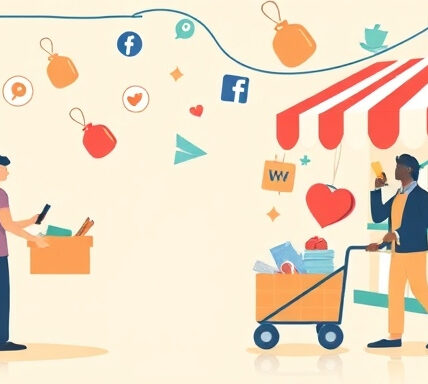Social media has transformed how we communicate, connect, and engage with the world. Over the past two decades, platforms have evolved from simple text-based networks to immersive virtual environments that promise to revolutionize our digital lives. This article traces the journey of social media—from the rise of Facebook to the emerging possibilities of the metaverse—and explores what the future holds for online interaction.
The Early Days: Facebook and the Rise of Social Networking
The birth of Facebook in 2004 marked a turning point for social media. It allowed users to create profiles, connect with friends, share status updates, and post photos. In its early stages, Facebook was about maintaining personal connections and building online communities. This platform was soon followed by others, including Twitter, LinkedIn, and YouTube, which expanded social media’s influence beyond personal relationships to include professional networking, video sharing, and real-time communication.
As Facebook grew, it became a hub for brands and businesses to reach consumers. The platform introduced advertising tools, pages, and groups, turning social media into an essential marketing tool. With billions of users, Facebook and other networks quickly shaped how people consumed information, from news to entertainment. However, challenges like data privacy concerns and misinformation also emerged, sparking debates on the ethical use of social media.
The Mobile Revolution and Visual Platforms
The shift to mobile devices dramatically changed social media. With smartphones, users were always connected, and platforms optimized for mobile, such as Instagram and Snapchat, gained popularity. These networks focused on visual content—photos, stories, and videos—catering to the growing demand for bite-sized, engaging media.
Instagram introduced features like filters and Stories, encouraging users to share everyday moments creatively. Snapchat took it a step further by making content temporary, fostering spontaneity. Meanwhile, Twitter became the go-to platform for real-time conversations, and YouTube cemented itself as the world’s primary video-sharing network.
The rise of visual platforms reflected a shift in user behavior: people increasingly favored short-form, engaging content over text-heavy posts. The need to share experiences visually and instantly became the new standard for social interaction online.
The Social Commerce Era
As platforms matured, they began integrating shopping features, increasing social commerce. Platforms like Instagram, Pinterest, and TikTok enable users to discover and purchase products directly through posts and videos, merging e-commerce with social media. Social networks also started leveraging influencers to promote products, building a new economy of creator-driven commerce.
Brands saw an opportunity to market more effectively by targeting niche audiences and capitalizing on viral trends. The social commerce era showed that social media could influence conversations and consumer behavior, making these platforms essential tools for businesses of all sizes.
Enter the Metaverse: A New Digital Frontier
The next phase of social media is the metaverse, an immersive virtual world where people can socialize, work, and play in 3D environments. Pioneered by companies like Meta (formerly Facebook), the metaverse promises to blend the digital and physical worlds through technologies such as virtual reality (VR) and augmented reality (AR). Platforms like Horizon Worlds and Decentraland are early examples of how social interaction may evolve beyond traditional screens.
In the metaverse, users will interact through avatars in immersive spaces, attending virtual events, shopping, and even collaborating on work projects. It also offers new opportunities for creators and businesses, from virtual storefronts to exclusive digital products like NFTs. However, concerns about privacy, accessibility, and digital well-being will remain as this new frontier develops.
ConclusionSocial media has come a long way—from the early days of Facebook’s news feed to today’s metaverse ambitions. What started as a tool for connecting people has grown into an ecosystem that shapes how we communicate, shop, and experience the digital world. As we move into the future, the evolution of social media will continue to be shaped by technological innovation and user behavior, with virtual worlds like the metaverse likely becoming the new frontier. However, with this growth comes the need to address challenges such as privacy, mental health, and digital inclusion to ensure that social media continues to serve as a positive force in our lives.





